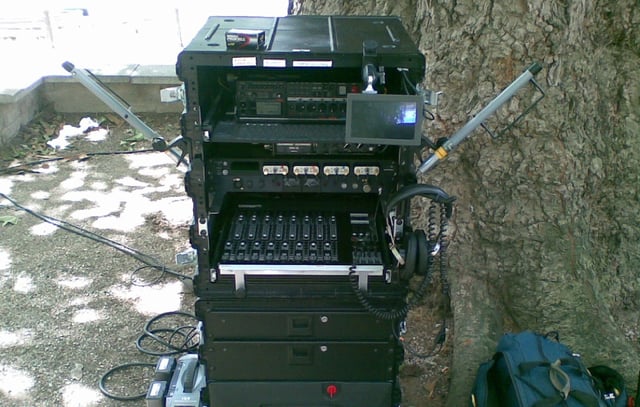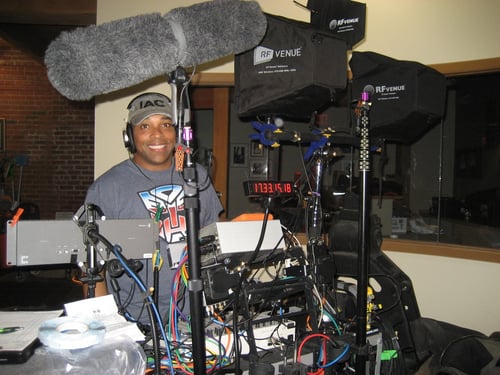
Wireless audio for on-location sound is tough to get right. Not only are production sound guys and girls constantly on the move, but they often work outdoors where interference and other reception problems are at their worst. Using high end gear is important--and in our experience, almost every full-time location sound pro always does--but without the right antenna design, and getting antenna placement as perfect as possible, even the most expensive receiver won't improve reception much.
Getting More Range with Directional Antennas
Range is the number one concern for a lot of operators. While different antennas do create different coverage patterns that change a receiver's sensitivity to signal, you first need to ask yourself whether this is a valid concern in the first place. Judging a system by range alone is not wise if you never get more than 20 feet from the microphone. If it is important, there are two types of antenna designs that suit the vast majority of production sound needs.
Shark fin antennas are the first choice for many sound professionals looking for a directional antenna, and they offer the same benefits to location sound mixers. More properly called "LPDA" antennas, shark fin or paddle antennas offer moderately high gain and good performance across a range of frequencies. Their beam pattern is narrow but not so narrow that the talent might slip out of the coverage area. They are a massive improvement over whips when directionality and rejection of off-axis signals is required. The downside is that two are required for diversity reception.
Helical antennas are the next most popular directional antenna. They have high gain, upwards of 9 dBd (11 dBi), and are designed in such a way that they have circular polarization. While two helicals are also required for true diversity reception, the circularly polarized design cuts down on certain types of interference and drop outs, and is ideal to use as a transmitting antenna. They are ideal for transmitting intercom and timecode signals, and can be used as a compact, lightweight long range receiving antenna.
It's important to note that getting more power out of a system without a Part 15 is impossible. The FCC caps Part 15 (unlicensed) transmitter power at 50 mW. Unless you have a Part 74 license, you can't turn up the power any more than that. Using a higher gain antenna does not increase transmitted power because RF power is not the same thing as gain. And so called "active antennas" do increase gain by suppling an in-line amplifier behind the antenna, but they tend to cause more problems than they solve.
Using Directional Antennas with the Bag System
Location sound operators use one of two configurations. A portable cart rigged up to fit sound gear, or the so called "bag system," which may be used by a boom operator working with a mixer somewhere else, or a one-man-band sound guy who has everything in one bag. Soundcarts are usually found on film sets, while bags are common on both sets and in the field.
Attaching antennas to soundcarts is straightforward. Collapsible stands with 3/4-20 threads are cheap and easily integrated into the cart. Mixers use our antennas on soundcarts every day. For example, Marlowe Taylor made extensive use of RFV directionals on a recent indy film starring Katherine Heigl.

While needing to use a directional antenna with a bag system is rarer, the situation does present itself from time to time. Unfortunately, directional antennas achieve focused coverage and improved reception at the expense of compactness, so rigging even a single paddle to the harness quickly has you reaching for the gaffers tape or some other Goldbergian solution. But for diversity reception, you need two antennas, not one. We have heard of sound guys rigging up all sorts of contraptions to get two antennas in their mobile kit, and we salute them. But it is much more convenient to use a cross-polarized UHF antenna like our Diversity Fin, which provides diversity reception in the space of only one antenna.
Photos courtesy of osde8info and Marlowe Taylor.


